Hello, new guy here. Thought I would show of my restoration of an Ames No.3 that has taken place over the last couple years.
This is the lathe as I purchased it. As I found out later, the lathe probably came out of Rochester area, then spent some time in Buffalo before making it's way into Southern Ontario. A custom headstock had been fabricated for the lathe, which took 5C collets with a lever collet closer. Real nice setup, but non-original. I was also given the original headstock, but it needed a rebuild. The cross slide was an Elgin model, and the tailstock was original but had a spacer installed so that it matched the center height of the headstock.
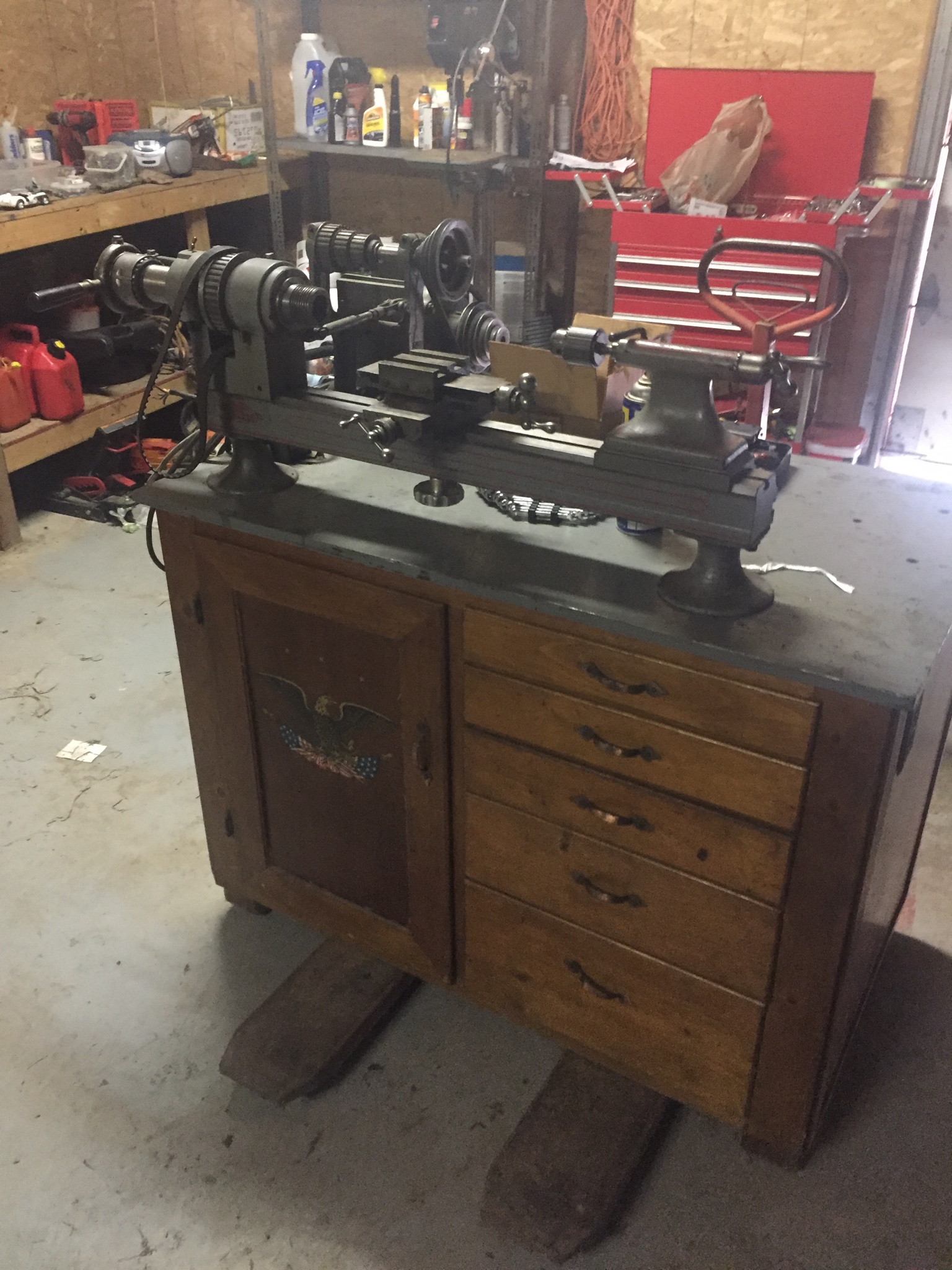
First order of business was a strip and repaint of the bed and tailstock and a check over everything mechanical. Everything was operational, and I used the lathe in this configuration for a while.
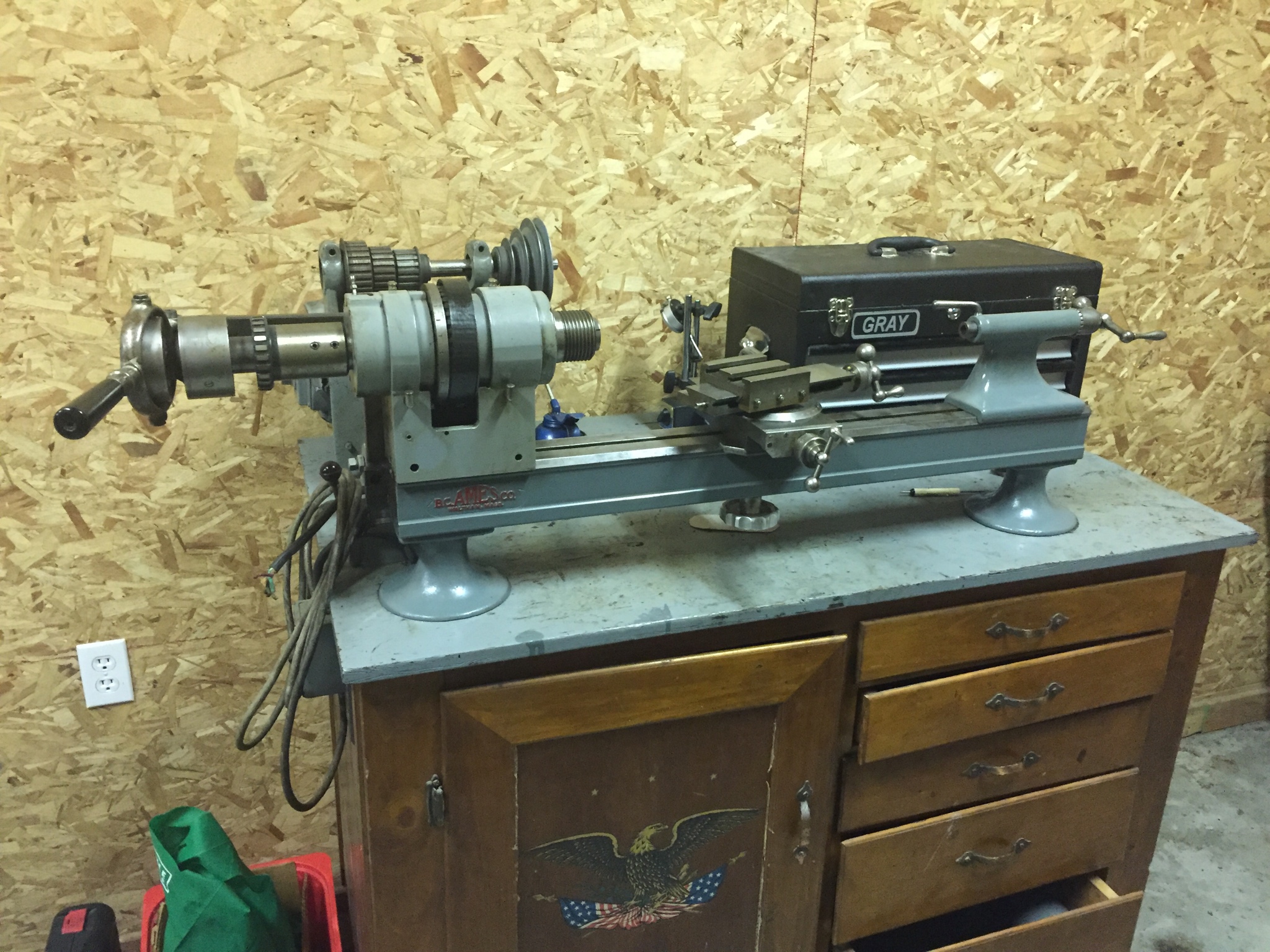
After that came a period of trying to figure out what to do. The original headstock uses 1AM collets, but I didn't have any collets and they are rare as hen's teeth and priced to match. I considered getting a new spindle made, to convert the machine over to use a 4C or 5C collet, which would be much more common. While getting some quotes on that work amazingly a full set of 1AM collets in 1/64" increments was listed for sale for a reasonable price. I jumped all over that deal.
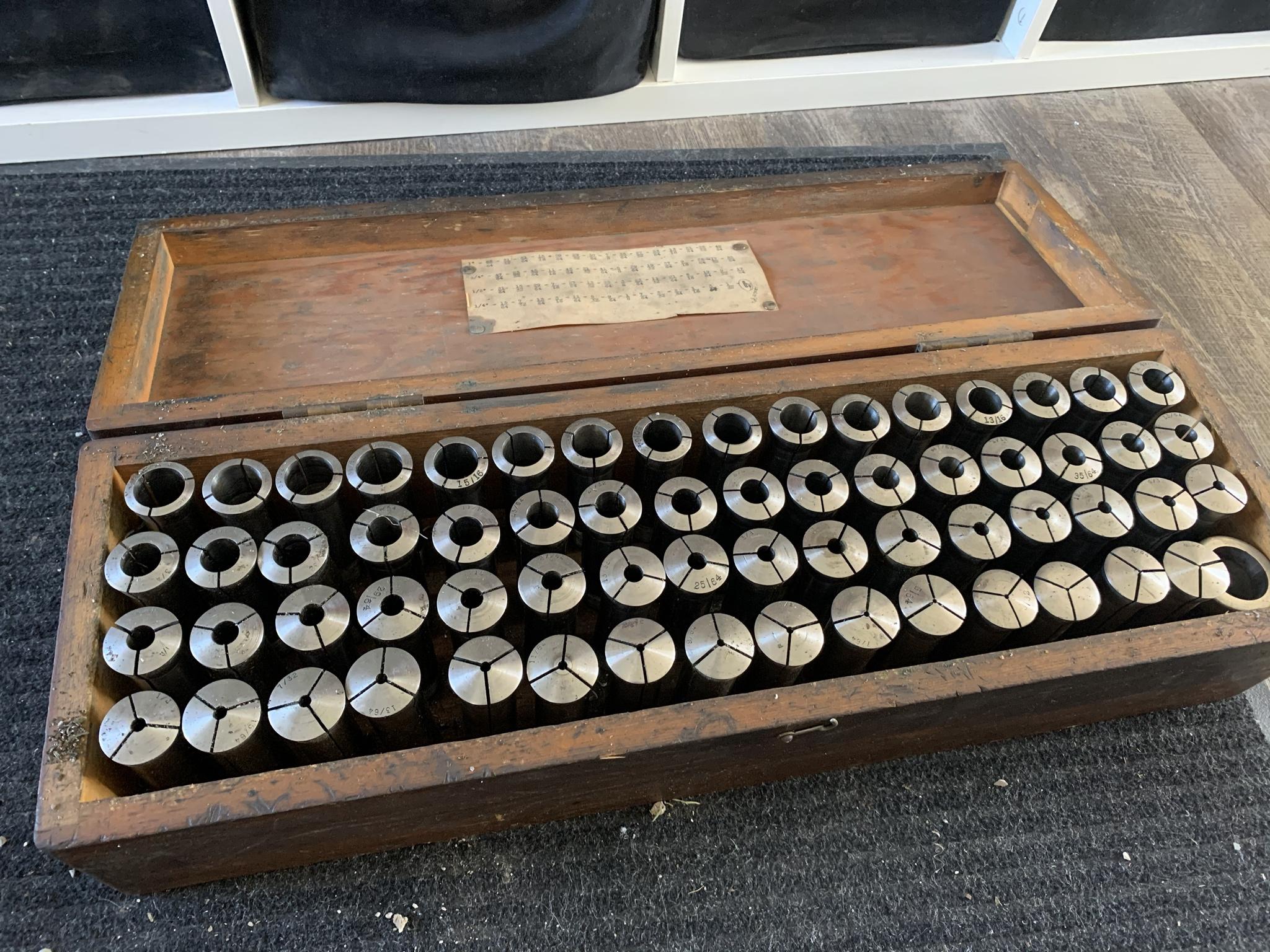
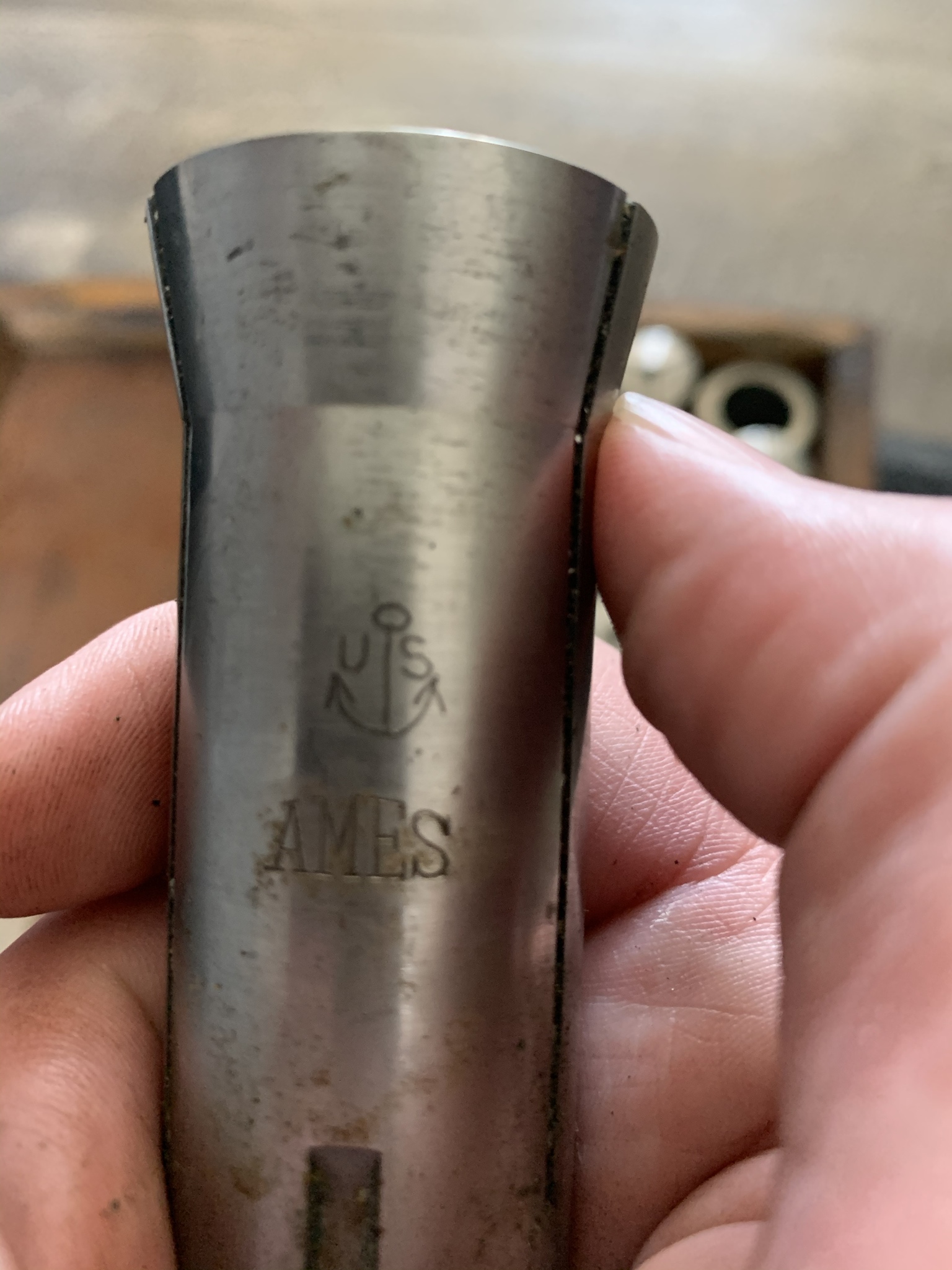
With that hurdle out of the way next came job of rebuilding the headstock. That involved a complete strip down, finding replacement bearings, making new felt seals, and getting everything back together again.
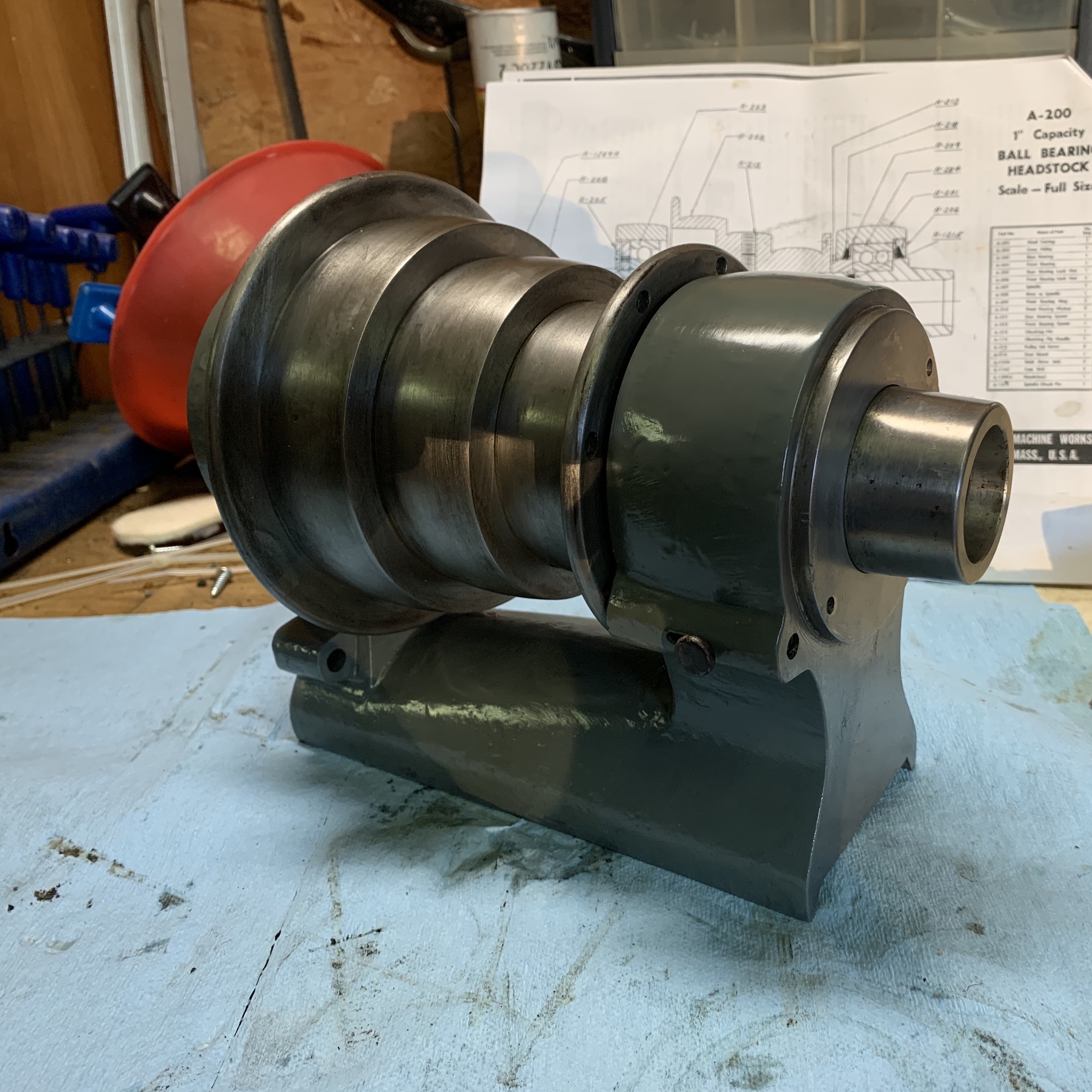
In the meantime I also managed to get my hands on an original Ames cross slide that had very little wear and it was stashed away for eventual install.
The next hurdle was the drive system. If you noticed, the fabricated headstock used a cogged belt for a drive. Finding a cone pulley of the right size proved to be evasive, so I ended up making one out of 3 pulleys, which also involved a new countershaft assembly.
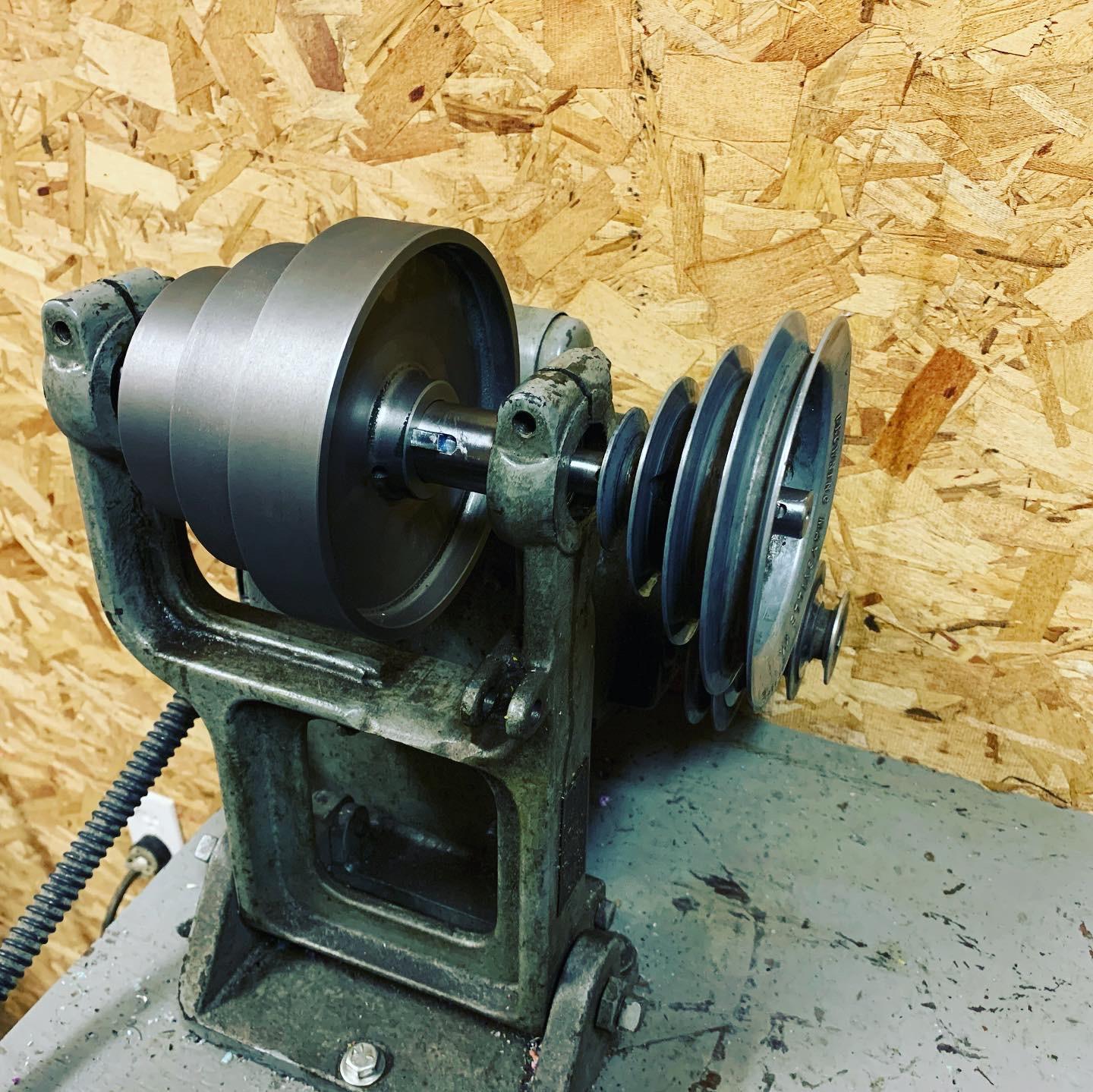
The last major hurdle was the hold-down bolts for the original headstock and tailstock. The headstock did not have any hold-down bolts, and the tailstock had a custom-length bolt. So I had to do some reverse engineering to make some new hold-downs and some fitting to get them working properly.
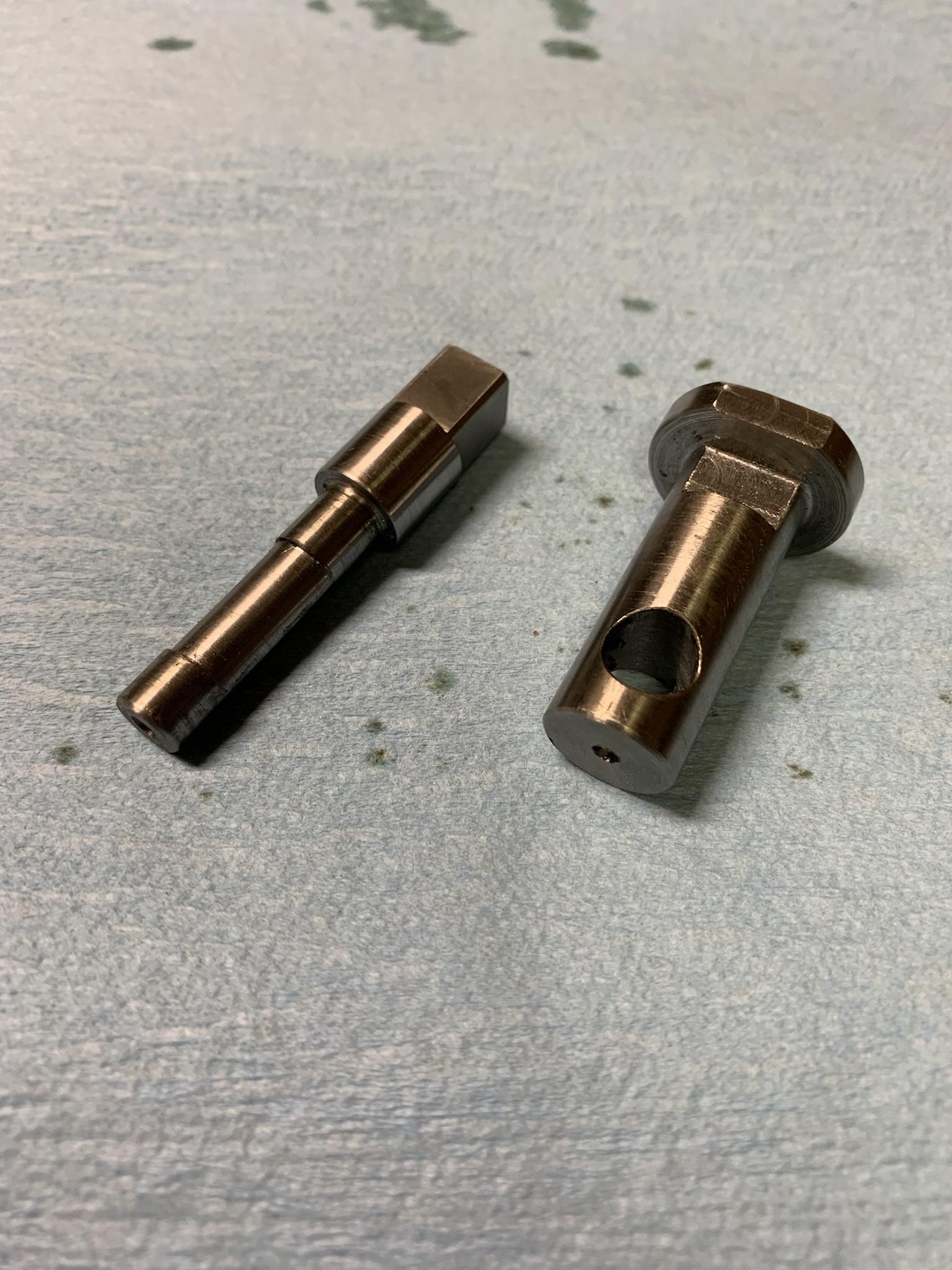
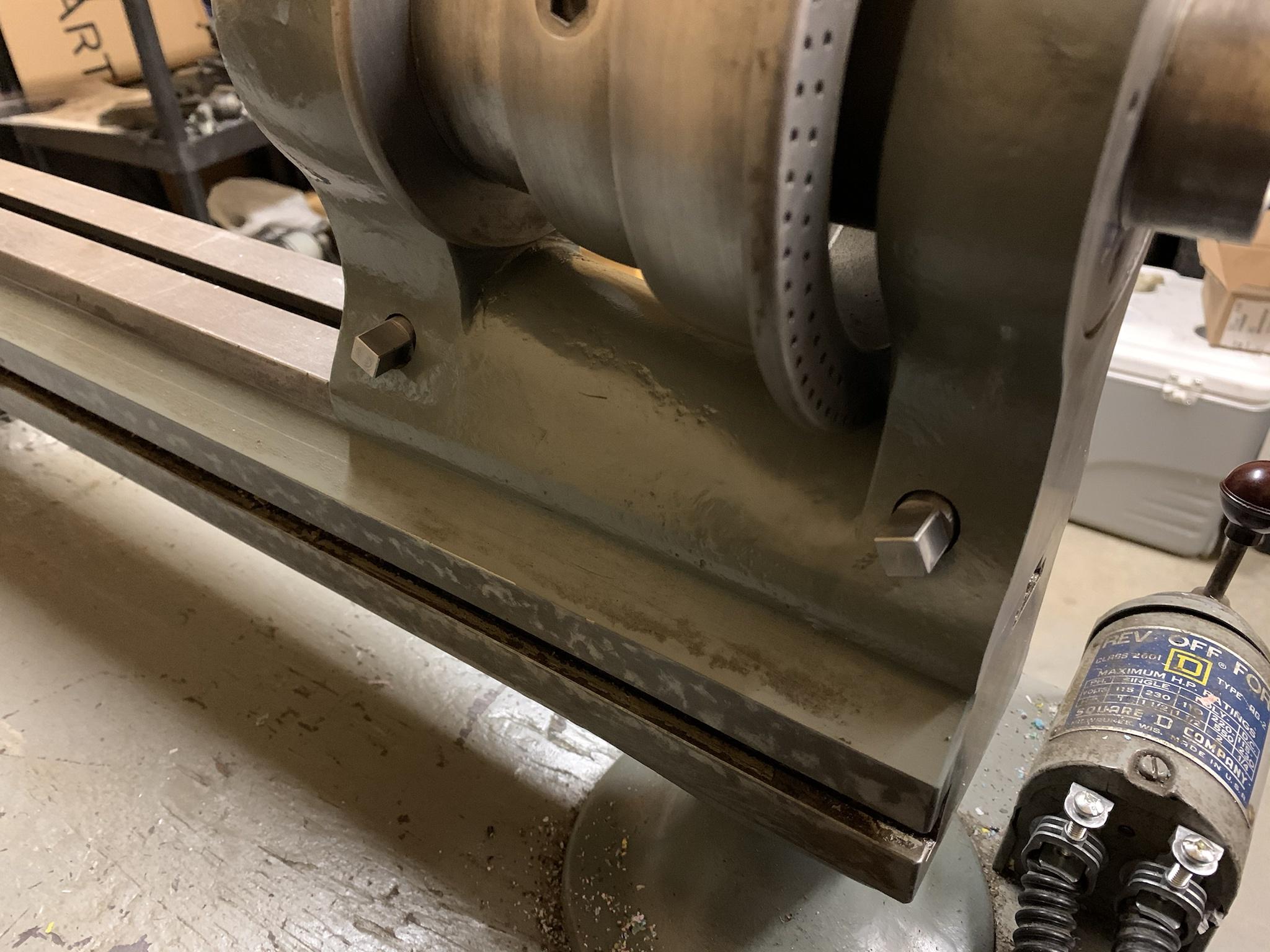
And with that the lathe was back to factory spec.
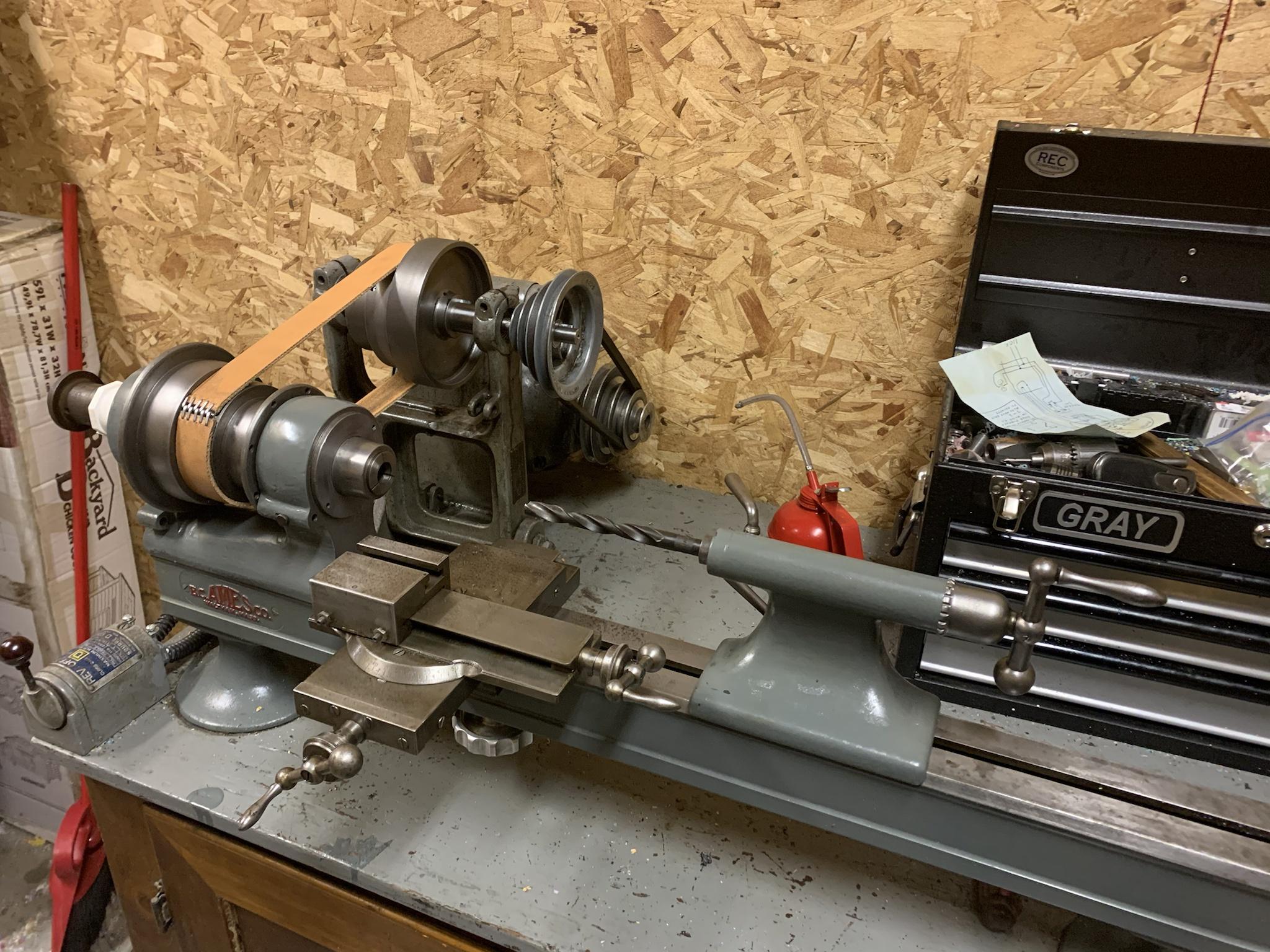
I bolted on a multifix-style tool post, and that's where things sit right now.
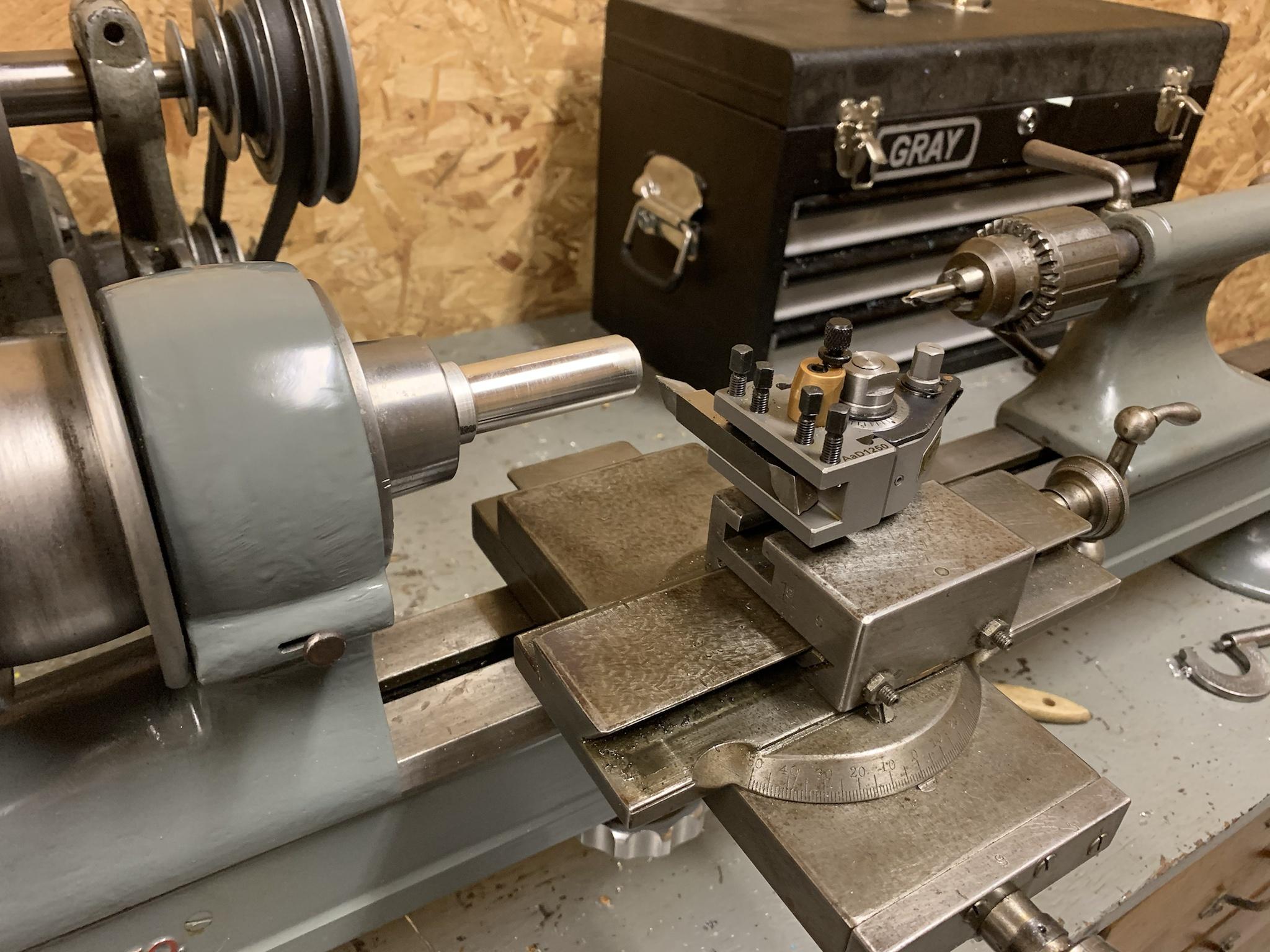
Future plans involve getting the drawbar adjusted to fit properly (the one I found is a touch long and the bakelite handwheel disintegrated in shipping), getting a couple chucks fit, and looking for accessories. I would love to find a turret to fit as well, but that's going to be a rare find so I'm trying not to get my hopes up. A milling attachment would also be a handy thing for me to get my hands on.
This is the lathe as I purchased it. As I found out later, the lathe probably came out of Rochester area, then spent some time in Buffalo before making it's way into Southern Ontario. A custom headstock had been fabricated for the lathe, which took 5C collets with a lever collet closer. Real nice setup, but non-original. I was also given the original headstock, but it needed a rebuild. The cross slide was an Elgin model, and the tailstock was original but had a spacer installed so that it matched the center height of the headstock.

First order of business was a strip and repaint of the bed and tailstock and a check over everything mechanical. Everything was operational, and I used the lathe in this configuration for a while.

After that came a period of trying to figure out what to do. The original headstock uses 1AM collets, but I didn't have any collets and they are rare as hen's teeth and priced to match. I considered getting a new spindle made, to convert the machine over to use a 4C or 5C collet, which would be much more common. While getting some quotes on that work amazingly a full set of 1AM collets in 1/64" increments was listed for sale for a reasonable price. I jumped all over that deal.


With that hurdle out of the way next came job of rebuilding the headstock. That involved a complete strip down, finding replacement bearings, making new felt seals, and getting everything back together again.

In the meantime I also managed to get my hands on an original Ames cross slide that had very little wear and it was stashed away for eventual install.
The next hurdle was the drive system. If you noticed, the fabricated headstock used a cogged belt for a drive. Finding a cone pulley of the right size proved to be evasive, so I ended up making one out of 3 pulleys, which also involved a new countershaft assembly.

The last major hurdle was the hold-down bolts for the original headstock and tailstock. The headstock did not have any hold-down bolts, and the tailstock had a custom-length bolt. So I had to do some reverse engineering to make some new hold-downs and some fitting to get them working properly.


And with that the lathe was back to factory spec.

I bolted on a multifix-style tool post, and that's where things sit right now.

Future plans involve getting the drawbar adjusted to fit properly (the one I found is a touch long and the bakelite handwheel disintegrated in shipping), getting a couple chucks fit, and looking for accessories. I would love to find a turret to fit as well, but that's going to be a rare find so I'm trying not to get my hopes up. A milling attachment would also be a handy thing for me to get my hands on.

